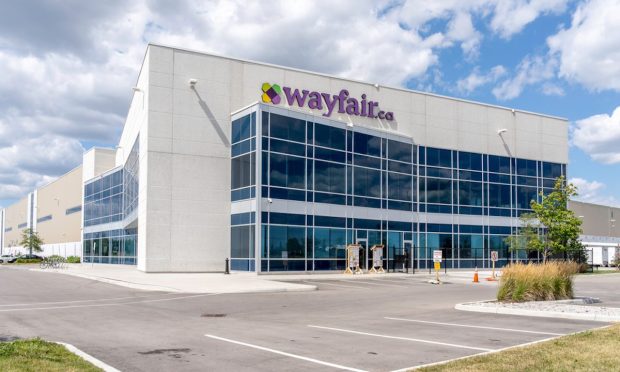Wayfair Bets Stores Can Boost Slowing Digital Sales

Traffic at physical stores remains on a long-term downward trajectory despite a recent rebound compared to last year’s pandemic lows, but that isn’t stopping retailers from leaning into store openings, with Wayfair as the latest digital brand to announce new brick-and-mortar efforts.
The three stores, all located in Massachusetts, will open in early 2022. Two stores will be dedicated to Wayfair’s AllModern brand, which focuses on modern design furniture; the third store will be a “lifestyle space” based on Joss & Main, a brand focused on a mix of contemporary and classic-style furniture. Wayfair said these stores are the first in a series of openings, with “plans to launch additional stores representing all five of its brands in optimal formats, sizes and geographies over the next two years; the flagship Wayfair and Perigold brands will be featured in larger store formats.”
The online furniture and home goods retailer has spent several years testing different pilots and pop-up concepts; the most recent “permanent” store, located at the Natick Mall in Massachusetts, closed in December 2020 after 15 months.
“At Wayfair, we are focused on creating the best possible experience for our customers,” Karen McKibbin, Wayfair’s head of physical retail, said in a news release on Tuesday (Dec. 7). “That includes meeting them wherever they are on their shopping journey and delivering the exceptional value, selection, service and inspiration they enjoy from our entire family of brands.”
Few specifics were provided about the “distinctive retail environments” planned for the three stores, though Wayfair said customers will be able to purchase products in-store and have orders delivered to their homes.
“We are introducing a new kind of omnichannel shopping experience powered by the Wayfair platform, inviting our customers to engage with the brands they know and love in an innovative format that blends the best of in-store and online shopping,” McKibbin said.
Slowing eCommerce
Executives hinted that plans for new retail locations were in the works in early November during Wayfair’s quarterly earnings conference call, though few details were disclosed at the time.
“In each step along the journey, we feel like we had a learning agenda that we were able to complete and maximize, which sort of leads us to now,” CEO Niraj Shah told analysts on the call. “We have some ideas for different concepts that … we would then want to scale.”
Also see: Wayfair Hints at Expanded Physical Presence in 2022
Part of the emphasis on physical retail likely comes from a realization that the eCommerce boom seen over the past two years may be coming to an end. Wayfair reported that total net revenue was down nearly 19% year over year in the third quarter, to $3.1 billion. U.S. net revenue was down nearly 21% to $2.6 billion.
Active customers, however, reached over 29 million as of Sept. 30, an increase of 1.5% year over year, and orders per customer remained steady at about 1.9.
“Consumers have naturally shifted some spend toward travel and entertainment, and from eCommerce toward brick-and-mortar demand,” Shah said. “Interest in the home remains resilient, but it’ll take a few more quarters for our growth, and eCommerce growth in general, to get back to normal.”
New Digital Features
Wayfair is still working to attract digital shoppers in new and innovative ways, last month debuting an in-app video commerce platform called Wayfair on Air that features shows hosted by creators several times a day. The platform also hosts Wayfair Rundown, a daily show focused on affordable home furnishings, and Two-Spaced, a daily show about multi-functional living.
Read more: Wayfair Debuts In-App Video Commerce Offering
Shah told analysts that Wayfair on Air will eventually “grow into an on-demand shopping offering.”
Social commerce sales reached nearly $27 billion last year, according to eMarketer, a 39% year-over-year increase. Sales are expected to surpass $36 billion this year and top $79 billion by 2025. Social commerce is projected to make up 4% of U.S. eCommerce sales in 2021.